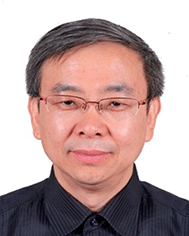Recent progress and perspectives on single-atom catalysis
Zhiqun
Lin
 *a,
María
Escudero-Escribano
*a,
María
Escudero-Escribano
 *b and
Jun
Li
*b and
Jun
Li
 *c
*c
aSchool of Materials Science and Engineering, Georgia Institute of Technology, Atlanta, GA 30332, USA. E-mail: zhiqun.lin@mse.gatech.edu
bCenter for High Entropy Alloy Catalysis, Department of Chemistry, University of Copenhagen, Copenhagen, 2100, Denmark. E-mail: maria.escudero@chem.ku.dk
cDepartment of Chemistry, Key Laboratory of Organic Optoelectronics & Molecular Engineering of Ministry of Education, Tsinghua University, Beijing, 100084, China. E-mail: junli@tsinghua.edu.cn
Catalysis plays a crucial role in modern chemical industries and the global economy. Currently, over 90% of chemicals are produced via various catalytic processes. Moreover, the demand for new catalytic technologies is ever-growing to ensure a sustainable future for the world.1 In particular, the design and development of advanced catalyst materials with tailored active sites is essential for sustainable energy conversion and the synthesis of green fuels and chemicals.2
Since the term “single-atom catalysts (SACs)” was first coined in 2011 in a pioneering study by Zhang, Li, Liu and co-workers,3 it has been gradually acknowledged by the catalysis community over the last decade and has emerged as one of the most active frontiers in heterogeneous catalysis.4,5 Owing to the single-atom feature of active metal elements dispersed on the host material, SACs offer great advantages in maximizing the efficiency of metal atom utilization and providing more uniform and well-defined active sites than conventional heterogeneous catalysts consisting of various kinds of poorly defined active sites on nanoparticles. These characteristics render the SACs more active and selective for numerous reactions and they behave like homogeneous and enzymatic catalysts in terms of both their local coordination structure and catalytic performance. As a result, SACs serve as a bridge between heterogeneous, homogeneous and biological catalysis, and have been shown to catalyse a wide range of industrially important reactions in electro-, photo-, and thermal-catalysis studies.
In light of the incredible research progress in this extraordinarily important area in recent years, we take this opportunity to launch this themed issue focusing on single atom catalysis. The aim of this themed issue is to highlight recent exciting advances made by the leading scientists working in the field, as well as the broad impact of SACs. The themed issue covers all aspects of recent significant progress in SACs, including materials synthesis, theoretical mechanistic prediction and understanding, advanced characterization, and various promising applications for key (photo)electrocatalytic reactions for the green transition. These applications include the CO2 reduction reaction (CO2RR) and its conversion into valuable fuels and chemicals, the N2 reduction reaction (N2RR) for ammonia production, and the oxygen reduction reaction (ORR) for applications in fuel cells and batteries. Some examples are purposefully featured below in this editorial.
Appropriate synthetic strategies are vitally important for the precise design and synthesis of high-quality SACs due to the aggregation and migration tendencies of metal atoms, which originate from the high surface energy of isolated single metal atoms on the host material. In the communication by Yang et al. (DOI: 10.1039/d1ta08412g), a simple yet robust pyrolysis-free approach is developed to craft single-atom cobalt catalysts with high electrocatalytic ORR activity. This route eliminates the high-temperature pyrolysis treatment that usually results in undesirable structure changes, thus enabling the atomically accurately control of the electrocatalyst structure. Also, Pérez-Ramírez et al. (DOI: 10.1039/d1ta09238c) established a gas-phase redispersion strategy and proposed the redispersion mechanism to synthesize high-loading Ru, Ir and Rh catalysts on carbon supports with controlled metal nuclearity in the subnanometre regime. This approach allows the preparation of high-density metal sites with tunable nuclearity for tailored applications.
Computational modelling and simulations via quantum chemistry are powerful methods for predicting and understanding the atomic scale properties of single-atom sites and their role in adsorption and reactivity processes. Su et al. (DOI: 10.1039/d1ta08285j) systematically investigated the electrocatalytic CO2RR activity of a new type of SAC with a series of single-atom transition metals (TM = Sc, Ti, V, Cr, Mn, Fe, Co, Ni, Cu, Zn, Y, Zr, Nb, Mo, Tc, Ru, Rh, Pd, Ag, and Cd) anchored on Na4SiMo12 based on first principles calculations. The results may spur the development of new SACs for CO2RR. In another research article, Jiao et al. (DOI: 10.1039/d1ta09608g) identified the co-adsorption energy of three *CO intermediates as an effective descriptor for the C3 activity on a densely arrayed single-atom alloy Cu nanopyramid catalyst (Cu-DANs). The newly discovered concerted trimerization mechanism, in association with single-atom alloy (SAA) catalysts, offers great possibilities for materials design toward more long-chain oxygenate generation. The combination of computational modelling and experimental research was also used for the investigation of nitrogen fixation to ammonia via the N2RR (DOI: 10.1039/d1ta07903d, DOI: 10.1039/d1ta08350c, DOI: 10.1039/d1ta08241h).
The local atomic environments of active sites in SACs play a crucial role in determining their catalytic activity, selectivity, and stability. Hence, identifying the local atomic structures of active sites in specific SACs is a prerequisite for understanding their catalytic performance in various reactions. In the review article by Wei et al. (DOI: 10.1039/d1ta08254j), the recently reported practical applications of both ex situ and in situ synchrotron-radiation spectroscopic techniques are discussed in depth. The advantages and limitations of existing synchrotron-radiation techniques, including X-ray absorption spectroscopy (XAS), photoemission spectroscopy (PES) and Fourier-transform infrared spectroscopy (FTIR), are highlighted. Another perspective article by Boyes et al. (DOI: 10.1039/d1ta08307d) discusses the real time in situ visualization and analysis of dynamic single atom processes in heterogeneous catalysis under realistic controlled working conditions, which are crucial to the mechanistic understanding of the relation between dynamic atomic structures and functions and the rational design and development of catalysts. Interestingly, Huang et al. (DOI: 10.1039/d1ta08080f) present an in situ environmental transmission electron microscope study showing the positive effect of single-atom cobalt on the formation and decomposition of spherical Na2O2 in Na–O2 batteries during the discharging and charging process, respectively.
The design of new materials with engineered active sites is crucial for the selective conversion of CO2 into valuable products. In their perspective (DOI: 10.1039/d1ta10440c), Narváez-Zelada and Varela discuss the advantages, limitations and future directions toward the development of CO2RR electrocatalysts based on metal–organic frameworks (MOFs) with well-defined single-atom sites. In addition, three review articles (DOI: 10.1039/d1ta07778c, DOI: 10.1039/d1ta09069k, and DOI: 10.1039/d1ta08337f) by experts present recent advances in the electrochemical CO2RR of SACs in terms of industrial processes, support-based modulation and mechanistic understanding. He, Yang and co-workers (DOI: 10.1039/d1ta08494a) investigate the coordination environment of single-atom sites on MOFs for the CO2RR. Liu et al., in a review article, present an overview of the finding that SACs, rather than the conventionally presumed nanoparticles, worked in CO2 hydrogenation with supported nickel (DOI: 10.1039/d1ta09914k). Zeng et al. (DOI: 10.1039/d1ta08016d) and Xu et al. (DOI: 10.1039/d1ta08561a) underscored the interactions between metal atoms and oxide supports and the synergistic enhancement of SACs for clean energy catalysis, respectively. Additionally, four research articles and one perspective introduce the photocatalytic and photoelectrocatalytic applications of SACs in this themed issue (DOI: 10.1039/d1ta09954j; DOI: 10.1039/d1ta08347c, DOI: 10.1039/d1ta08143h, DOI: 10.1039/d1ta08253a and DOI: 10.1039/d1ta08252c).
The electrocatalytic ORR is of paramount importance for renewable energy conversion and storage devices. Various research articles and communications discuss different applications of SACs for the ORR. Fe–N–C and Co–N–C SACs are very promising precious-metal-free catalysts for applications in fuel cells. Pham-Huu and co-workers (DOI: 10.1039/d1ta09519f), Kramm and co-workers (DOI: 10.1039/d1ta04668c), Lin and co-workers (DOI: 10.1039/d1ta07219f) and Xie and co-workers (DOI: 10.1039/d1ta08029f) present recent strategies toward engineered structures with enhanced activity and stability. Stephens, Titirici and co-workers (DOI: 10.1039/d1ta09560a) present a novel approach to synthesise C2N–Fe dual atom electrocatalysts for the ORR in acidic media. López-Salas and co-workers investigate a new route to prepare Cu-decorated N-doped carbonaceous catalysts for the ORR (DOI: 10.1039/D1TA09459A). In addition, single atom catalysts are very promising for Zn–air batteries (DOI: 10.1039/d1ta06897k, DOI: 10.1039/d1ta08007e, and DOI: 10.1039/d1ta08050d).
Using density functional theory (DFT) calculations, Kolb and Calle-Vallejo (DOI: 10.1039/d1ta08366j) build Sabatier-like bifunctional SAC volcano plots for the oxygen reduction and oxygen evolution reactions (ORR and OER, respectively). While most of the works are focused on the four-electron ORR, Siahrostami and co-workers (DOI: 10.1039/d1ta07562d) explore SnO2-supported SACs as promising bifunctional electrocatalysts for the electrochemical production of H2O2via the two-electron ORR and OER using DFT calculations.
Furthermore, other promising applications of SACs, including the electrocatalytic hydrogen evolution reaction (DOI: 10.1039/d1ta06240a, DOI: 10.1039/d1ta08287f and DOI: 10.1039/d1ta07375c), thermal- and electro-catalytic hydrogenation reactions (DOI: 10.1039/d1ta07910g), acetylene semihydrogenation reaction (DOI: 10.1039/d1ta08002d), cyclooctene epoxidation reaction (DOI: 10.1039/d1ta09227h) etc. are also included in this themed issue.
Finally, we hope that this themed issue on SACs with a small collection of papers published in Journal of Materials Chemistry A will provide readers with an overview of the recent progress achieved and the future developing directions in the rapidly evolving field of single atom catalysis. We thank all the contributing authors, reviewers, and editorial and production staff of this themed issue.
References
- J. Hagen, Industrial Catalysis: A Practical Approach, Wiley-VCH, Hoboken, New Jersey, 2015 Search PubMed.
- G. Papanikolaou, G. Centi, S. Perathoner and P. Lanzafame, ACS Catal., 2022, 12, 2861–2876 CrossRef CAS.
- B. Qiao, A. Wang, X. Yang, L. F. Allard, Z. Jiang, Y. Cui, J. Liu, J. Li and T. Zhang, Single-atom catalysis of CO oxidation using Pt1/FeOx, Nat. Chem., 2011, 3, 634–641 CrossRef CAS PubMed.
- X. Yang, A. Wang, B. Qiao, J. Li, J. Liu and T. Zhang, Single-Atom Catalysts: A New Frontier in Heterogeneous Catalysis, Acc. Chem. Res., 2013, 46, 1740–1748 CrossRef CAS PubMed.
- A. Wang, J. Li and T. Zhang, Heterogeneous single-atom catalysis, Nat. Rev. Chem., 2018, 2, 65–81 CrossRef CAS.
| This journal is © The Royal Society of Chemistry 2022 |



